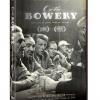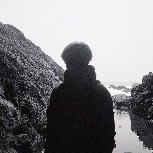All Activity
- Past hour
-
Hi all, I am hoping one of you with more experience can help me out with my Filmo 70DR. Earlier today I was out shooting some film when I noticed the winding key was loose. I pushed it back in and it seemed fine but when I hand the camera to my friend the key fell out. Now it seems like this is suppose to happen, but how do I get the key to stay back in without it falling out every time I tilt the camera? It had never done this before and I’m not sure exactly what I did to cause this. Any advice would greatly help me! best, Andrew
- Today
-
Daniel D. Teoli Jr. started following Back in the day, block ice was wrapped for the ice box.
-
Ad 1948 <><><><> Daniel D. Teoli Jr. Archival Collection Daniel D. Teoli Jr. Small Gauge Film Archive Daniel D. Teoli Jr. Advertising Archive Daniel D. Teoli Jr. VHS Video Archive Daniel D. Teoli Jr. Popular Culture Archive Daniel D. Teoli Jr. Audio Archive Daniel D. Teoli Jr. Social Documentary Photography
- Yesterday
-
could if there would be some lock to secure the button in the correct position. if such lock would fail it would likely destroy the camera so the friction coupling would still be good to have.
-
yes I am not a machinist but even I can tell that is not acceptable surface finish and will cause issues. the original manufacturing is of better quality, in most cases Soviets added at least the absolutely mandatory finishing touches to surfaces where it is really needed for the camera to work. If looking a Konvas gate for example, it is rough on some areas which are not touching film and are just "dead weight" but all the areas which DO touch the film are grinded and polished like they should. And the underside of the plate is, I assume, precision grinded to some tolerance which allows all the gate plates thickness being correct by 1/100th of a mm if measuring them and comparing to each other. So the soviets did care if it would had made the camera considerably worse to leave some surface unfinished. They shot propaganda with them after all, someone would probably had ended up in gulag if the camera would had messed the film because the rails being unfinished or other lazy manufacturing error 😄
- 31 replies
-
- krasnogorsk
- krasnogorsk3
- (and 14 more)
-
μεταμορφώσεις
Jeff Bernstein replied to Jeff Bernstein's topic in Students, New Filmmakers, Film Schools and Programs
[ Enter the Alchemist’s boy, Peter ] Peter [ to himself ]. What a life do I lead with my master! Nothing but blowing of bellows, beating of spirits, and scraping of crosslets. It is a very secret science, for none almost can understand the language of it: sublimation, almigation, calcination, rubification, incorporation, circination, cementation, albification, and fermentation, with as many terms unpossible to be uttered as the art to be compassed. John Lyly’s Galatea was performed before Queen Elizabeth I by a troupe of juveniles. Peter the Alchemist’s boy may have been performed by a six-year-old schoolkid. The child actor getting right this memory-feat and complicated elocution in live performance on stage—the perfecting of public speaking was, apparently, a primary reason why schoolboys were taught the art of acting in the first place—was a part of the interactive fun for the esteemed audience watching the production on New Year’s Day. The potentially treacherous phonemic stream of Peter’s speech recalls, say, Danny’s amusingly just-successful delivery of Don’t worry, mom. I know all about cannibalism. I saw it on TV. And the audience smiles. -
I hate to dog on someone's hard work, but I'm a machinist by trade, and I have to say that part is really bad. Those aren't "tight tolerances" at all; some of that looks hand-filed. The tool marks and burns on the edge of the pocket above and below the gate are one thing (a thing I would be ashamed of on a part I gave someone for free, let alone charged money for), but the tool marks on the film rails are completely unacceptable. That surface needs to be as close to glass finish as possible. I hope this is a rough prototype, because that work is on par with the original manufacturing...which I think most of us agree is not incredible. This is optical manufacturing. It can't be done on any old J-head knee mill, this needs to be either CNCd or done on a VERY stiff non-adjustable-head machine.
- 31 replies
-
- krasnogorsk
- krasnogorsk3
- (and 14 more)
-
okto simaia started following Krasnogorsk K3 focus problem S16 conversion?
-
Forgive me if I'm re-treading ground you've already covered, but couldn't you leave the camera in the run position, mechanically, and just start and stop the motor itself?
-
Seconding this. Still camera gear from Lomo, Kiev, etc has been referred to as FSU for years. I think changing the name for political reasons is pretty terrible, along the lines of the US fad of calling french fries "Freedom Fries" after the French declined to join us in bombing countries that weren't involved. The misdeeds of a country's ruler, despotic or no, don't change the nation of origin of things that country has produced, and a nationality--of items or of the laborers who built them--is distinct from a government. Rather, I think the name should be changed because it simply isn't accurate: many of these optics and cameras were made in Belarus or Ukraine.
-
Hey guys, I have an inkling about the answer to this question but was hoping someone more experienced might be able to remove all uncertainties 🙂 Do the Lightbridge CRLS reflectors change the colour of the light you bounce into them at all? I would think not really since the material on a CRLS reflector doesn't have a particular colour, but just wanted to make sure. Reason I ask is because I want a specific colour filling into the room through a window, and will obtain the necessary Rosco / Lee colour gel to cover my lighting fixture (likely a Nanlux 1200B with FL-35 fresnel) for this. For some set ups outside certain rooms I will be using the CRLS (1m x 1m) reflector, whilst for others I won't. But I would like full consistency in the colour of the light that ultimately makes it into the room from my fixture. I'm wondering if I might need to acquire x2 slightly different coloured gels that will compensate for any difference from bouncing into CRLS, or if it will be such a minuscule difference that it won't matter. Any ideas / suggestions greatly welcomed! Thanks in advance, Chaa.
-
Alex Wilson joined the community
-
What is this"grip truck" of which you speak... But seriously, I wandered into Filmtools here in LA this week where they had one on display, and the number appears to be twelve inches.
-
well I think it looks great - notwithstanding the way YouTube tries to 'correct' film grain etc - it bodes well that we have an alternative to Kodak out there albeit I can only go to 16mm format (one man band) thus this test for me is simply my subjective appreciation.....perhaps you could make the footage available or visible in a way that none of these platforms screw with it? Vimeo perhaps?
-
'Printer lights' system for dummies please....
Gautam Valluri replied to Stephen Perera's topic in Film Stocks & Processing
Our film lab network members have made some video tutorials for the Matipo: https://vimeo.com/showcase/7866728 There are a lot of resources on film printing on the filmlabs website as well (but mostly in french): https://www.filmlabs.org/technical-section/film-printing/ -

'Printer lights' system for dummies please....
Simon Wyss replied to Stephen Perera's topic in Film Stocks & Processing
Memochrome is an additive RGB system for intermittent printers. It works with high-intensity LEDs, a control box, and an open Excel-based CSV data software. I have first used it in 2007. You have 50 points or steps for each light colour, freely programmable. One frame can get 25-25-25, the next 47-11-38, then 0-0-0, whatever. Limit is 32,000 sets. Maximum working speed is 25 frames per second. The system is available in three variants, variable intensity, variable duration, variable distance. Print and intermediate film stocks react differently to increasingly short exposure, so variable duration is perhaps not everyone’s favourite, densities diminish exponentially with shorter flashes. A glimpse at the innards of the prototype control box -

'Printer lights' system for dummies please....
Mark Dunn replied to Stephen Perera's topic in Film Stocks & Processing
If you search on "Bell & Howell Model C" a lot comes up. brianpritchard.com is also a good source. Brian is ex-Kodak. He may chip in here if he's still around. -

'Printer lights' system for dummies please....
Stephen Perera replied to Stephen Perera's topic in Film Stocks & Processing
would be great if anyone have any more photos or whatever to add to this thread of perhaps stuff they have done themselves...thanks to everyone for the message much obliged







